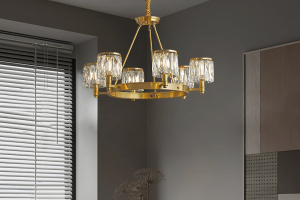Introduction
Sustainable lighting companies are rapidly gaining traction in the market as consumers demand more eco-friendly and energy-efficient lighting solutions. These companies are committed to reducing environmental impact while still producing quality lighting products. In this article, we will delve into the world of sustainable lighting companies and the innovative technologies they are using to create a brighter and greener future.
What are Sustainable Lighting Companies?
Sustainable lighting companies are those that prioritize sustainability, energy efficiency, and eco-friendliness in their lighting products. They aim to reduce energy consumption and waste in the manufacturing, distribution, and disposal of their products. Some of these companies use renewable materials and technologies, such as solar power and LED lighting, to further reduce their environmental impact.
Examples of Sustainable Lighting Companies
1. Philips Lighting – This company has a long history of pioneering sustainable lighting solutions. Their latest products include smart LED lighting systems that can be controlled from a smartphone, and a range of energy-efficient commercial lighting solutions.
2. Osram – Osram is another industry leader in sustainable lighting. They manufacture LED lighting solutions for commercial, residential, and automotive applications, and offer a range of smart lighting systems that can be controlled remotely.
3. Cree – Cree is a US-based company that specializes in LED lighting products. Their products are designed to last longer and use less energy than traditional lighting solutions, and are widely used in commercial and industrial settings.
Why Choose Sustainable Lighting?
The benefits of sustainable lighting are many. Firstly, sustainable lighting uses less energy than traditional lighting solutions, which reduces carbon emissions and helps combat climate change. Secondly, sustainable lighting products are often longer-lasting, which means fewer replacements are needed, reducing waste and unnecessary consumption.
Benefits of Sustainable Lighting
1. Energy Efficiency – Sustainable lighting uses less energy and reduces greenhouse gas emissions, making it a more environmentally responsible choice.
2. Cost Savings – Sustainable lighting products are often more energy-efficient and longer-lasting, which can lead to cost savings over time.
3. Healthier Work and Living Spaces – Many sustainable lighting solutions, such as LED lighting, produce less heat and emit fewer harmful chemicals, making them healthier for people and the environment.
Sustainable Lighting Technologies
There are many sustainable lighting technologies being developed and used by sustainable lighting companies. Some of the most innovative sustainable lighting technologies include:
Solar Powered Lighting
Solar power is an environmentally friendly and renewable energy source that is being increasingly used in sustainable lighting solutions. Solar-powered lighting is particularly useful in areas where traditional electricity is not available.
LED Lighting
LED lighting is a highly energy-efficient lighting technology that is rapidly gaining popularity. LED lighting uses up to 80% less energy than traditional lighting solutions and has a longer lifespan, reducing waste.
Smart Lighting Systems
Smart lighting systems use sensors and data to adjust lighting levels based on occupancy and daylight levels. This technology reduces energy consumption and provides a more comfortable and efficient lighting experience.
Conclusion
Sustainable lighting companies are leading the way towards a brighter and greener future. Their commitment to sustainability, energy efficiency, and eco-friendliness is transforming the lighting industry and setting new standards for environmental responsibility. By choosing sustainable lighting solutions, individuals and businesses can reduce energy consumption, save money, and protect the environment.





More Stories
The Elegance of Spiral Staircase Chandeliers: A Perfect Blend of Form and Function
The Elegance of Sconce Hallways: Illuminating Your Passages with Style
Illuminate Your Space with Adjustable Wall Lights in the UK